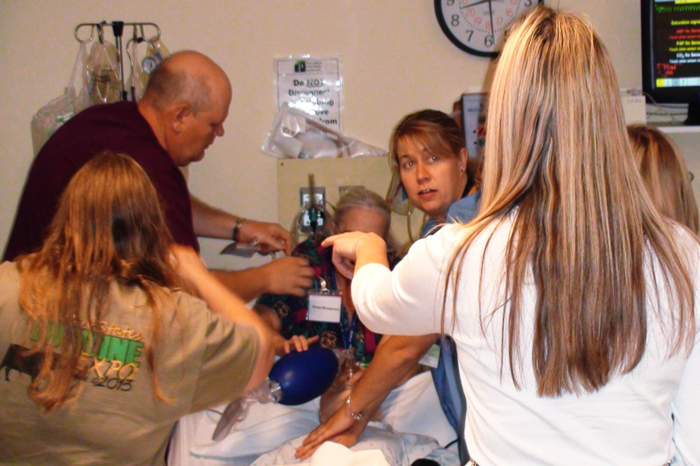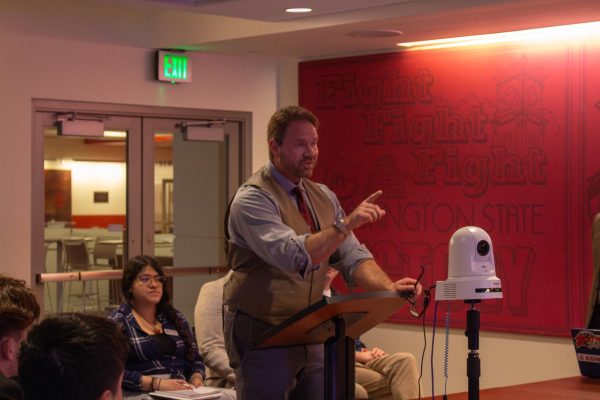Pullman Regional awarded for readiness
Doctors and nurses participate in a simulationto make sure they are ready in the event of a resuscitation.
November 8, 2013
Excellent preparation for emergency resuscitation situations recently won Pullman Regional Hospital a national award.
The hospital received the Excellence Through Innovation Award for Resuscitation Curriculum Development for their work in simulation training. They accepted the award at the October HealthStream National Conference in Nashville, Tenn.
“This award really talks about using simulations, or mock codes,” Alison Weigley, Pullman Regional Hospital community relations coordinator said.
Drills are put on for the hospital staff to practice skills they would use in an emergency situation, Weigley said.
Lauré Larsen, director of intensive care and the medical and surgical units, is heavily involved in the simulation process, organizing the training involved and helping assess outcomes.
“What we’ve done is we’ve worked to build training for our staff that will prepare them for emergencies,” Larsen said.
Larsen facilitates many of the simulations and said it allows staff members to practice their skills in a safe environment, as well as giving them the opportunity to ask questions and evaluate their own performances.
The simulations are encouraged for all clinical staff members but are required for nurses and other staff members who would be utilized in emergencies.
While different simulations occur for all different types of medical situations, the award recognizes the hospital’s excellence in resuscitation simulations.
“They walk out of the room with a lot of confidence to handle a resuscitation emergency,” Larsen said.
Larsen said the other benefits of utilizing a simulation experience is the team building that forms, as well as sorting out minor details, such as how much medication and what kind, needs to go into the syringes.
Donna Haynes, Pullman Regional Hospital human resources specialist, is responsible for the simulation lab. The goal is to replicate real-life situations as closely as possible, she said.
“We use high-fidelity simulation mannequins that have the function of a human being,” Haynes said.
With this technology, staff members are getting as much realistic practice as possible with measurable results, Haynes said.
The results of the simulation are seen in patient outcomes, making it clear what was done right and what was done wrong, Haynes said.
Larsen said staff members fill out evaluations before and after simulations, reflecting on what they knew before and what they have learned after.
The simulation program was introduced two years ago, and it is evident that learning has increased, Larsen said.
“People are able to respond quickly, efficiently and responsibly, and that’s why drills are so important,” Weigley said.
Larsen said that while the simulation technology has been a financial investment for the hospital, it combines many former types of training that were done separately instead of in one large simulation scenario.
“As far as the expense and effectiveness, this is a much more efficient use of time and money,” Larsen said.
Weigley said the hospital staff’s goal is to work as hard as it can in order to provide the best and safest care possible.
“This is a small community, and this is our community, and we want to go above and beyond to give outstanding care,” Weigley said. “We’re treating our neighbors and our friends.”





















